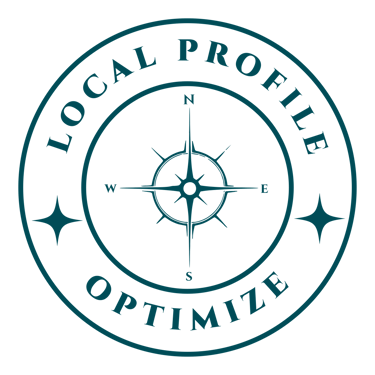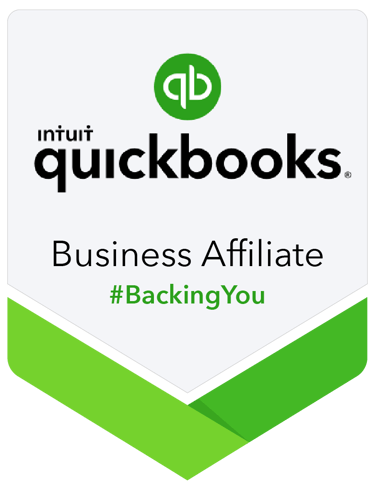How to Read a Profit & Loss Statement for Small Business Owners | Simple Guide
Learn how to read your P&L statement in plain English. Discover what your profit and loss report means for your small business and make better financial decisions.
REPORTINGINCOME STATEMENT
Jerry Blanco
6/23/20255 min read


A Plain-English Guide to Understanding What Your Business Is Really Making (And Where Your Money Goes)
Does the thought of opening your Profit & Loss statement make you want to hide under your desk? You're not alone. Many small business owners would rather scrub the floor than dive into financial reports. But here's the thing—your P&L statement is actually trying to tell you a story. And once you understand that story, you'll wonder why you were ever intimidated.
Think of your Profit & Loss statement (also called a P&L report or income statement) as your business's report card. It shows you exactly how much money came in, how much went out, and what's left over—all for a specific period of time, like a month, quarter, or year.
What Exactly IS a Profit & Loss Statement?
Your P&L statement is like a financial movie of your business over time, while your balance sheet is more like a snapshot of a single moment. The P&L shows the action—all the money movements that happened during a specific period.
Here's what makes it so valuable: it answers three critical questions every business owner needs to know:
How much money did we bring in?
How much did it cost us to run the business?
Did we make money or lose money?
Sounds simple, right? It really is, once you know what you're looking at.
Breaking Down Your P&L: The Three Main Sections
Section 1: Revenue (The Money Coming In)
This is the top section of your P&L, and it's usually the most exciting part to look at. Revenue includes all the money your business earned from selling products or services. You might see terms like:
Gross Sales: The total amount customers paid you
Net Sales: Gross sales minus any refunds, discounts, or returns
Service Revenue: Money earned from providing services
Product Revenue: Money earned from selling physical products
Pro tip: If you see multiple revenue lines, don't panic. This just means your bookkeeper is being detailed about different income streams, which is actually helpful for understanding where your money comes from.
Section 2: Expenses (The Money Going Out)
This is where many business owners get overwhelmed, but stick with me. Expenses are typically broken into two categories:
Cost of Goods Sold (COGS): These are the direct costs of making your product or delivering your service. For a bakery, this includes flour, eggs, and sugar. For a consultant, this might include software subscriptions used directly for client work.
Operating Expenses: Everything else it takes to run your business—rent, utilities, marketing, insurance, office supplies, your salary, and that coffee you definitely needed to get through Monday morning.
Section 3: Profit (Or Loss) - The Bottom Line
This is where the magic happens. Your profit is what's left after subtracting all expenses from your revenue. You might see several types of profit listed:
Gross Profit: Revenue minus Cost of Goods Sold
Operating Profit: Gross profit minus operating expenses
Net Profit: The final number after everything is accounted for
If this number is positive, congratulations—you made money! If it's negative (usually shown in parentheses or red), you spent more than you earned during that period.
Why Your P&L Statement Matters More Than You Think
Your profit and loss statement isn't just a historical document—it's a crystal ball for your business future. Here's how smart business owners use their P&L reports:
1. Spotting Trends Before They Become Problems
Let's say you notice your marketing expenses jumped 40% last quarter, but your revenue only increased 10%. That's valuable information! You can adjust your marketing strategy before you waste more money.
2. Making Pricing Decisions
If your gross profit margin is shrinking, it might be time to raise your prices or find ways to reduce your cost of goods sold. Your P&L statement shows you exactly where you stand.
3. Planning for Growth
Want to hire your first employee? Your P&L statement shows you if you can afford that $3,000 monthly salary plus benefits. It takes the guesswork out of growth decisions.
4. Preparing for Tax Season
A well-organized P&L statement makes tax preparation infinitely easier. Your accountant will thank you, and you'll save money on professional fees.
Red Flags to Watch For in Your P&L Statement
Even if numbers aren't your thing, you can spot potential problems by looking for these warning signs:
Declining gross profit margins: If the percentage of profit you make on each sale is dropping, investigate why
Expenses growing faster than revenue: This is unsustainable long-term
Irregular expense spikes: Large, unusual expenses might indicate fraud or accounting errors
Revenue concentration: If 80% of your income comes from one client, that's risky
How to Actually Read Your P&L (Step-by-Step)
Here's exactly how to approach your P&L statement without getting overwhelmed:
Step 1: Look at the date range at the top. Make sure you're looking at the period you think you are.
Step 2: Start with the revenue section. Ask yourself: "Does this match what I think we sold?"
Step 3: Check your gross profit margin. Calculate it by dividing gross profit by revenue. For most service businesses, this should be 60-80%.
Step 4: Scan your expense categories. Do any numbers jump out as surprisingly high or low?
Step 5: Look at your net profit. Is it positive? Is it enough to sustain and grow your business?
Step 6: Compare to previous periods. Are you trending up or down?
Making Business Decisions with Your P&L
Your profit and loss statement becomes powerful when you use it to make decisions. Here are some practical examples:
Should you invest in new equipment? Check if your cash flow can handle the monthly payments
Can you afford to attend that conference? See if your marketing budget has room
Is it time to raise prices? Look at your profit margins and expense trends
Should you discontinue a service? Compare the profitability of different revenue streams
Common P&L Mistakes Small Business Owners Make
Mistake #1: Only looking at the bottom line and ignoring the details
Mistake #2: Comparing different time periods without accounting for seasonal changes
Mistake #3: Not categorizing expenses properly, making the report less useful
Mistake #4: Focusing only on revenue and not paying attention to expense management
Taking Action: What to Do Next
Reading your P&L statement is just the beginning. Here's how to put this knowledge to work:
Schedule monthly P&L reviews: Block 30 minutes each month to review your statement
Create benchmarks: Establish what "good" numbers look like for your business
Set up alerts: Know when expenses hit certain thresholds
Use it for planning: Base your business decisions on what the numbers tell you
Remember, your P&L statement is a tool, not a test. There are no wrong answers—only information that helps you make better decisions for your business.
The most successful small business owners I work with aren't necessarily math wizards. They're simply willing to look at their numbers regularly and use that information to guide their decisions. Your P&L statement is waiting to tell you the story of your business. All you have to do is listen.
Ready to Master Your Business Finances?
If reading your P&L statement still feels overwhelming, you're not alone. Many successful business owners work with bookkeeping professionals to ensure their financial reports are accurate and actionable.
Contact us today for a free consultation to discuss how professional bookkeeping can help you understand and use your financial statements to grow your business.


